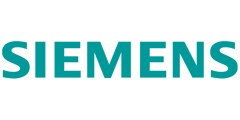June 28, 2025, is just around the corner. For businesses engaging with the European Union market, this date marks a pivotal moment. The European Accessibility Act (EAA) will come into full effect, fundamentally transforming how products and services must be designed and delivered. This isn’t just about consumer-facing apps and websites; the EAA has far-reaching implications for the manufacturing sector and large B2B software companies. If your compliance strategy isn’t finalized, the clock is ticking.
This landmark directive is more than just regulatory red tape - it’s a commitment to creating an inclusive single market, benefiting the EU’s 135 million people with disabilities, older adults, and everyone else.
________________________________________
What is the European Accessibility Act?
The EAA (Directive (EU) 2019/882) aims to harmonize accessibility requirements across EU member states. Its goal is to eliminate barriers caused by fragmented national laws, making cross-border trade smoother and increasing the availability of accessible products and services. At its core, the EAA champions a "design for all" philosophy, ensuring products and services are usable by the widest range of people without requiring special adaptations.
________________________________________
Who Needs to Comply?
The EAA applies to economic operators, manufacturers, importers, distributors, and service providers - offering specific products and services to EU consumers. This includes businesses outside the EU that sell into the market. While microenterprises (fewer than 10 employees and an annual turnover under €2 million) have some exemptions for services, product compliance standards still largely apply.
________________________________________
What Products and Services Are Covered?
The EAA targets a wide range of products and services, including:
• Computers, operating systems, smartphones, and tablets
• ATMs, ticketing machines, and check-in kiosks
• E-commerce websites and mobile apps
• Consumer banking services (e.g., online banking, mobile apps)
• E-readers, e-books, and audiovisual media services
• Emergency communication systems (e.g., 112)
• Passenger transport services
________________________________________
Implications for Manufacturers
Manufacturers are at the forefront of EAA compliance. Key obligations include:
1. Accessible Product Design: Hardware like computers, smartphones, and kiosks must be designed for usability by people with diverse abilities. Features like customizable magnification, high contrast, and larger buttons are essential.
2. Assistive Technology Compatibility: Products must work seamlessly with assistive technologies like screen readers or voice recognition software.
3. Accessible Packaging and Instructions: All product-related information - packaging, labels, and instructions - must be accessible, using formats like Braille, audio, or large print.
4. Accessible Customer Support: Support services must address accessibility features and be accessible themselves.
5. Supply Chain Responsibility: Manufacturers must ensure products meet EAA requirements before entering the market, including conformity assessments and technical documentation.
________________________________________
Implications for B2B Software Companies
While the EAA primarily targets consumer-facing offerings, its ripple effects are significant for B2B software vendors:
1. Indirect and Direct Impact: If your software is part of a B2C service covered by the EAA (e.g., payment platforms or customer support tools), it must be accessible.
2. Client-Driven Demand: B2C clients subject to the EAA will require accessible software to ensure their compliance. Accessibility is becoming a non-negotiable procurement criterion.
3. Internal Tools & National Laws: Some national laws may impose accessibility requirements on internal B2B systems, especially for public sector clients.
4. Competitive Edge: Accessible software enhances user experience, aligns with ESG standards, and provides a competitive advantage.
________________________________________
Your Core Obligations
Regardless of your sector, these general obligations are critical:
• Web and App Accessibility: Digital interfaces must meet WCAG 2.1 Level AA standards via EN 301 549.
• Accessible Design: Embed accessibility into product and service design from the start.
• Accessible Information & Support: Ensure all user information and support channels are accessible.
• Staff Training: Educate teams on accessibility principles.
• Regular Audits: Continuously monitor and improve accessibility.
• Vendor Management: Ensure third-party components are compliant.
________________________________________
The Stakes: What Happens if You’re Not Ready?
Non-compliance after June 28, 2025, carries serious risks:
• Fines: Penalties vary by country and can reach up to €500,000 or a percentage of annual turnover.
• Market Restrictions: Non-compliant products may be banned.
• Reputational Damage: Being seen as exclusionary can harm your brand.
• Legal Action: Consumers and advocacy groups can file claims.
________________________________________
The Upside: Beyond Compliance
The EAA isn’t just about avoiding penalties - it’s an opportunity to:
• Expand your market to include the 1.3 billion people globally with disabilities.
• Enhance brand trust and user experience.
• Drive innovation through inclusive design.
• Align with modern values and ESG standards.
________________________________________
Final Steps: Act Now
With the deadline fast approaching, here’s what to prioritize:
1. Audit Your Systems: Ensure compliance with EN 301 549, not just WCAG.
2. Train Your Teams: Build accessibility expertise across your organization.
3. Validate Accessibility Claims: Ensure your statements are accurate and backed by credible documentation.
4. Document Everything: Maintain thorough records of audits, training, and remediation efforts.
________________________________________
The Future is Accessible
The European Accessibility Act is a turning point. For manufacturers, it means rethinking design and production. For B2B software companies, it’s about recognizing your role in the accessibility ecosystem.
As June 28, 2025, approaches, let’s embrace accessibility as a fundamental principle - not just for compliance, but for creating a better, more inclusive world.




